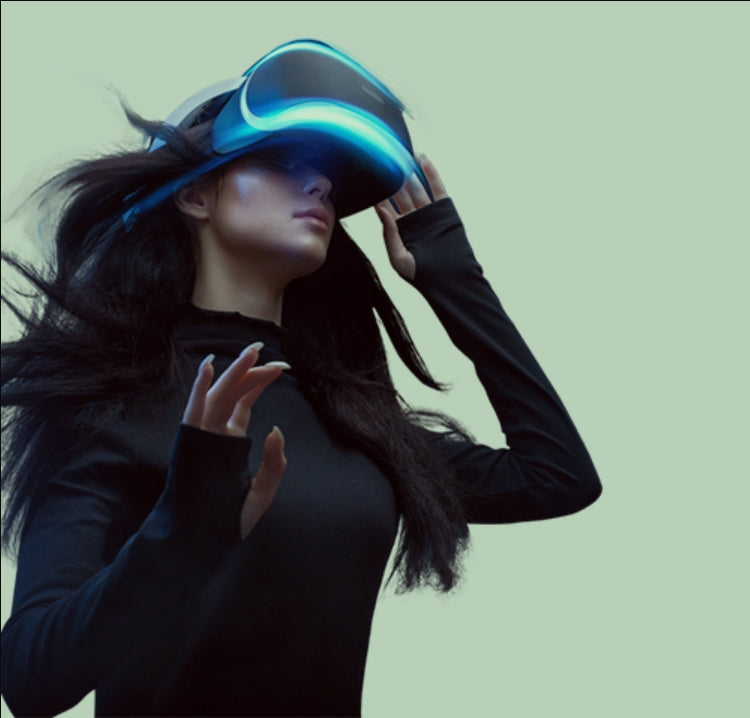BMW Quest 3 Digital Twin VR Training with Adjustable VR Lenses
Electric vehicles bring innovation and new training challenges. High-voltage EV batteries contain thousands of interconnected cells, making safety a top priority. Traditional training is costly and risky, with limited opportunities for hands-on practice.
To address this, BMW of North America introduced the Impossible Battery Program in 2025. Using Meta Quest 3 and digital twin VR technology, technicians can now safely simulate battery disassembly, coolant flow, and electrical current in an immersive environment.
Quest 3’s affordability and MR passthrough features make it the ideal platform for scalable, safe training. And to keep technicians comfortable during extended sessions, accessories like adjustable Quest 3 prescription lenses are increasingly valuable. These upgrades sharpen visuals, reduce fatigue, and make collaborative training more effective.
The Training Challenge
BMW faced significant hurdles in EV training:
- Risk: High-voltage components can cause serious injury.
- Cost: Each real battery pack costs thousands, limiting training stock.
- Invisible Systems: Current and coolant flows aren’t visible in real packs.
- Scalability: Deploying identical workshops nationwide is impractical.
Digital twins offer a safe, scalable alternative.
The Impossible Battery Program
BMW’s Impossible Battery uses VR to create a fully interactive battery replica. With Quest 3 headsets, technicians can:
- Safely disassemble and reassemble packs.
- Visualize coolant flow and energy currents
- Practice troubleshooting without damaging real hardware.
- Get feedback through gamified scoring.
Mixed reality passthrough lets training occur inside real workshops while overlaying digital components.
Why BMW Selected Meta Quest 3
BMW evaluated multiple headsets but chose Quest 3 for:
- Standalone power: No PC tether required.
- Passthrough MR: Safer awareness of physical tools and space.
- Portability: Easy deployment to hundreds of centers.
- Scalability: Cost-effective for enterprise-wide adoption.
Quest 3 balanced performance, price, and flexibility for global rollout.
2025 Updates
In September 2025, BMW added key features:
- Gamified missions: Repairs scored on speed and accuracy.
- Leaderboards: Regional competition boosts engagement.
- X-ray overlays: Visualize coolant and current flows.
- Simplified tools: Reduced frustration in VR handling.
- Mixed reality integration: Blend of real spaces with VR overlays.
The result: engaging, standardized training across all service centers.
Gamification’s Role in Learning
Gamification motivates technicians by turning training into active practice:
- Scenario-based tasks: Recalibrating modules, resealing packs.
- Balanced rewards: Prioritizes precision and safety.
- Competition: Leaderboards foster inter-center rivalry.
This interactive approach improves retention compared to lectures alone.
Benefits of Digital Twin VR Training
- Safety: Eliminates danger from live packs.
- Cost savings: Reduces reliance on expensive hardware.
- Consistency: Standardized modules across dealerships.
- Onboarding speed: New hires train virtually first.
- Deeper insight: Visualizes hidden systems.
- Scalable: Easy headset distribution across centers.
Challenges & Considerations
- Lack of tactile realism: VR can’t replicate true weight/resistance.
- Ongoing updates: Digital twins must evolve with new hardware.
- Equipment investment: Requires headsets and accessories.
- Certification still needed: VR complements, not replaces, live training.
Even so, VR dramatically enhances preparation and safety.
Why Adjustable VR Lenses Improve Team Training
Accessories like adjustable meta quest 3 lenses and are key to enterprise success.
Benefits
- Correction Range: Covers 0 to -6D or +3D to -3D.
- Sharper visuals: Essential for reading diagrams and fine technical details.
- Less fatigue: Supports multi-hour learning sessions.
- Comfort fit: Glasses-free setup reduces distraction.
- Shared use: Quick adjustments for multiple trainees.
- Fast install: Snap-in mounts and slider adjustments.
Why They Matter for BMW’s Program
- Clarity in details: Essential for reading labels, circuits, and overlays.
- Collaboration: Multi-user adaptability ensures team-wide training efficiency.
- Endurance: Technicians can train longer without strain.
For enterprise VR, prescription VR lenses are small investments with big impacts.
Industry Implications
BMW’s model has far-reaching implications:
- Automotive: Standardized EV servicing.
- Healthcare: Training for surgeries and diagnostics.
- Energy: Safe turbine and reactor training.
- Construction: Visualizing complex builds virtually.
By pairing digital twins with adjustable VR lenses, companies make VR both practical and comfortable for teams.
Strengths & Weaknesses
Strengths
- Safer, scalable EV training
- Engaging gamification
- MR passthrough realism
- Cost-effective deployment
Weaknesses
- Limited tactile realism
- Requires updates with new designs
- Hardware/maintenance costs
Tips for Teams Using VR Training
- Blend methods: Use VR as a prep stage before live training.
- Leverage data: Analyze metrics for performance insights.
- Encourage teamwork: Multiplayer modules boost collaboration.
- Invest in comfort: Equip with adjustable VR lenses for longer use.
- Keep models updated: Align training with latest EV tech.
Conclusion: VR Training Enhanced with Lens Comfort
BMW North America’s Impossible Battery program proves how digital twin training and Meta Quest 3 can transform industrial safety and education.
Paired with adjustable meta quest 3 prescription lenses, the training becomes clearer, more comfortable, and easier to share among teams. These accessories reduce strain and improve focus, helping trainees get the most from each session.
As industries worldwide adopt VR, BMW shows the way forward: immersive, scalable, and optimized with the right lens technology.
FAQs
Q1: What is BMW’s Impossible Battery program?
A VR training system using Quest 3 to simulate EV battery handling.
Q2: Why use Meta Quest 3?
Standalone, portable, with MR passthrough for realistic workshops.
Q3: Does VR replace hands-on training?
No, it complements real-world certification.
Q4: How do lenses help?
Adjustable VR prescription VR lenses enhance clarity, reduce fatigue, and allow sharing across teams.
Q5: Who benefits?
Technicians, trainers, and organizations scaling safe EV training.



